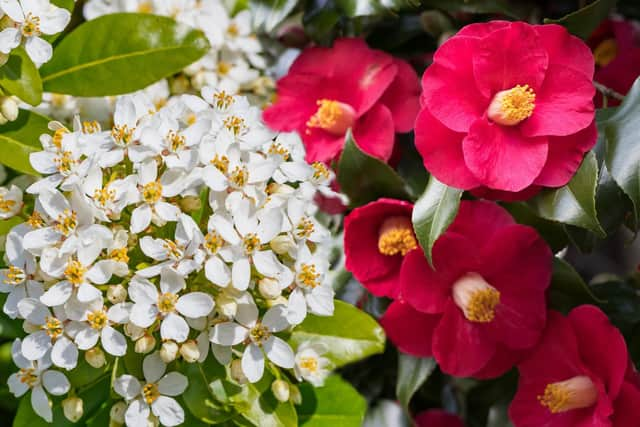How to make mid-January seem like it's midsummer '“ gardening with Brian Kidd


If you provide a good evergreen background, then there are places for those which lose their leaves in the autumn yet the garden won't look completely bare in winter.
Make a simple plan before buying the plants. A good book on shrubs is handy so a few winter hours can be enjoyed looking at the numerous varieties available. You'll need to know how high they grow and how far they spread.
Advertisement
Hide AdAdvertisement
Hide AdKnowing the eventual spread makes planning more enjoyable because the plants can be planted in the positions you want them to grow in. This will save a lot of money because you won't want as many as you thought. Shrubs, like kittens and puppies grow!
Winter-flowering heathers are a good example as they grow to about six inches high and have a spread of about 12in in two years. If we plant them about 12in apart, then in those two years they will grow so they touch each other and we can then enjoy the carpet of winter colour they provide.
Camellias vary. Some varieties have a spread of up to six feet but if left alone for years can spread to twice that distance. However, in a cultivated garden, pruning correctly after flowering keeps them in check.
If you plant a camellia next to a choisya they will have a combined spread of about 14ft, so, to get them at the correct distance, plant them seven feet apart.The trouble with this theory is that the border will look gappy for a couple of years. If professionals did it this way, Tom, Dick and Harry, plus their dogs, would walk through the border and it wouldn't become established. So they plant everything about a foot apart to cover the ground quickly. Is there any way round this problem?
Advertisement
Hide AdAdvertisement
Hide AdOf course. It's your garden, so why not plant annuals in the gaps which will provide colour all summer, and perhaps cheap plants such as wallflowers and bulbs for a spring sparkle?
This idea is not new and a lot of good gardeners find the effect pleasing. Try it and you'll find the numbers of annuals gradually drops as the years pass. But because the effect is so good, you will possibly find yourself pruning back the shrubs to ensure there's room for the flowers.
We now find ourselves with a mixed border which has a lot of advantages because there's always room to add another favourite plant.
Are you like us? Do you go to a nursery or garden centre and buy a plant only to find it's difficult to find somewhere to plant it? You're not the only one. When we fall in love with a pieris Forest Flame we have to prune one of the others to accommodate it.
Advertisement
Hide AdAdvertisement
Hide AdWhen you finish, isn't it great to look back at the border and say to yourself, you would never think it's winter, I'm so pleased we decided to plant those evergreens. For when the sun shines on them, it looks like the middle of summer.'‹'‹'‹'‹'‹'‹'‹'‹'‹'‹'‹'‹'‹'‹'‹'‹'‹'‹'‹'‹'‹'‹'‹'‹
THIS WEEK'S TOP TIP
Prick over soil where spring-flowering bedding plants such as polyanthus, forget-me-nots and winter-flowering pansies were planted. This will encourage a good root action because surface compaction will be broken.
 '‹'‹'‹'‹'‹'‹'‹
Â